| Srl | Item |
| 1 |
ID:
118714
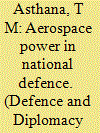

|
|
|
| 2 |
ID:
110796
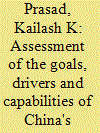

|
|
|
|
|
| Publication |
2012.
|
| Summary/Abstract |
Considering the growth, broadening national interests and the spectacular rise in
energy requirements that resulted in the import of 4.3 million bbl/d of crude oil in
2010-for China, ensuring mechanisms that guarantee energy supply to a booming
domestic economy is becoming increasingly vital. Beijing recognizes a strong
navy would constitute one such mechanism, and has for some time been in the
process of upgrading its naval force. A strong navy would serve other interests as
well. For one, it could help Beijing increase the chances of a favorable outcome
in case of a conflict with Taiwan. It could also allow China to settle the numerous
territorial claims in its littoral close to its ideal, with little involvement from nonclaimant states. Additionally, it could allow Beijing to project power further in
the Asia-Pacific. This article is an assessment of the various factors driving naval
modernization in the People's Republic of China (PRC). It also details China's
current naval capabilities and the recent trends in military expenditure. It will
conclude by suggesting that though China's navy is being rapidly built up, it
would be imprudent to assume that such modernization necessarily indicates future
Chinese bellicosity; and even if hegemony were a goal for the PRC, concluding that
naval aggression will be the most efficient way for Beijing to realize such ambitions
would be erroneous.
|
|
|
|
|
|
|
|
|
|
|
|
|
|
|
|
| 3 |
ID:
100630
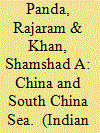

|
|
|
| 4 |
ID:
131324
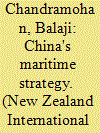

|
|
|
|
|
| Publication |
2014.
|
| Summary/Abstract |
After long being a continental power, China in the 21st century has started to follow an ambitious maritime expansion course, seeking to bolster its power-projection capabilities, especially n North Asia, South-east Asia, the South-west Pacific and the South Pacific. This has pushed the countries in the Asia-Pacific region such as Australia, India, Vietnam, Philippines and Indonesia to form an effective strategic partnership. Further, it has induced the United States to increase its maritime military presence in the region--with a view to having a forward presence or pivot. It has sought increased strategic co-operation and alliance with countries that are wary of China's expanding maritime presence.
|
|
|
|
|
|
|
|
|
|
|
|
|
|
|
|
| 5 |
ID:
110283
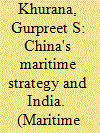

|
|
|
| 6 |
ID:
130292
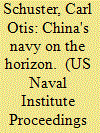

|
|
|
| 7 |
ID:
160693


|
|
|
|
|
| Summary/Abstract |
Chinese analysts view the US military not only as a model for emulation but also as a serious threat given its strengths in high tech weapons and equipment, power projection, and unparalleled ability to conduct information-intensive joint combat operations. Yet they also see many of the capabilities the US military relies upon to execute these operations – most notably forward bases, space capabilities, and computer networks and information technology systems – as potentially vulnerable to disruption. Accordingly, China has developed capabilities designed to deter or counter US military intervention in areas close to China. This poses two interrelated challenges for the United States: maintaining its military advantage in an era of rapid technological change and preserving deterrence against growing Chinese ambitions in Asia.
|
|
|
|
|
|
|
|
|
|
|
|
|
|
|
|
| 8 |
ID:
153721
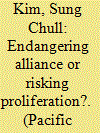

|
|
|
|
|
| Summary/Abstract |
This paper seeks to understand why the United States treated Japan and Korea differently in the revisions of bilateral nuclear cooperation agreements. On the sensitive issue of grating its allies the rights of developing enrichment and reprocessing (ENR), the United States did so for Japan in the 1977 and 1987 revisions, but did not for Korea during the 2015 revision. For the great power as a supplier state, there are two factors affecting the decision: policy-makers’ concern about alliance management prior to the calculation of security outcome, and firms’ commercial interests. In order to avoid damage to the US–Japan alliance and to maintain Japan's complementation for the US nuclear industry, Washington granted the rights of ENR to Tokyo. In contrast, because of its confidence of managing the US–Korea alliance and partly because of incompatibility of commercial interests between the two, Washington did not grant the rights to Seoul at the 2015 revision. Based on the comparison of the two cases, this paper underscores a need to alter the power projection theory regarding nuclear proliferation by explicating the alliance management as the ex ante element of power projection and by accounting for commercial interests such as fuel sale and technological partnership.
|
|
|
|
|
|
|
|
|
|
|
|
|
|
|
|
| 9 |
ID:
122061


|
|
|
| 10 |
ID:
171551
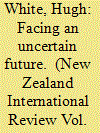

|
|
|
|
|
| Summary/Abstract |
Hugh White discusses the choices Australia faces in defence provision and what they mean for New Zealand.
|
|
|
|
|
|
|
|
|
|
|
|
|
|
|
|
| 11 |
ID:
130379
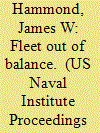

|
|
|
| 12 |
ID:
130094
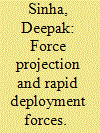

|
|
|
|
|
| Publication |
2014.
|
| Summary/Abstract |
As India's regional and global aspirations grow with its increasing economic clout, it will be forced to build up its capacity to project power in its national interest to ensure that the region is not destabilized by outside elements that may be inimical to it. The establishment of an effective and responsive RDF towards this end is inescapable. To be able to do so requires that India take a long hard look at its requirements and reassess its capabilities. It needs to quickly put in place structures that will ensure that its RDF is able to provide what is required at it so that in the words at Rahul Gandhi, "We stop being scared about how the world will impact us, and we step out and worry about how we will impact the world."
|
|
|
|
|
|
|
|
|
|
|
|
|
|
|
|
| 13 |
ID:
132211
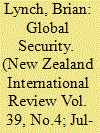

|
|
|
| 14 |
ID:
144266
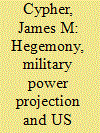

|
|
|
|
|
| Summary/Abstract |
Positing the dawning of a ‘post-American World’, ‘declinists’ have taken little account of the USA’s surging interventionist tendencies and the new political economy of military power arising from the relentless pursuit of global militarism. The USA has long exercised its competitive advantage in military power to enhance its diplomatic clout, as well as to advantageously reposition its national industrial and financial base. The pace of such martial efforts has accelerated as US policy makers, employing a ‘deep engagement’ grand strategy, strive for paradigm maintenance and geopolitical expansion within the periphery. Interventions have been facilitated through new processes and procedures, carefully constructed to create a sufficient degree of autonomy to permit the US state to ‘project power’ without broad societal resistance. US policy is path-dependent, locked into a reflexive pattern, unable and unwilling to learn from its long string of blunders and delusionary adventures. But US policy makers do not suffer a loss of will-to-power, as neo-conservatives allege.
|
|
|
|
|
|
|
|
|
|
|
|
|
|
|
|
| 15 |
ID:
156450


|
|
|
| 16 |
ID:
077724


|
|
|
| 17 |
ID:
140923
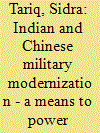

|
|
|
| 18 |
ID:
143183
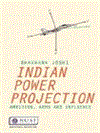

|
|
|
|
|
| Publication |
Philadelphia, RUSI, 2015.
|
| Description |
xi, 142p.: tables, figurespbk
|
| Series |
Whitehall Papers Series; 85
|
| Standard Number |
9781138654969
|
|
|
|
|
|
|
|
|
|
|
|
Copies: C:1/I:0,R:0,Q:0
Circulation
| Accession# | Call# | Current Location | Status | Policy | Location |
| 058456 | 355.033554/JOS 058456 | Main | On Shelf | General | |
|
|
|
|
| 19 |
ID:
125331
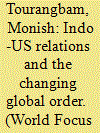

|
|
|
|
|
| Publication |
2013.
|
| Summary/Abstract |
Though the rise of China has managed to capture debates and deliberations around the world, the emergence of India as a power to reckon with is a pertinent theme of strategic discussion. India's economic rise has had major implications in its power projection, leading to debates regarding India's regional as well as global aspirations. There is a visible and reenergized intention among policymakers to project India's rising capabilities to help set agenda beyond South Asia, to the larger Asia-Pacific region and at the global level.
|
|
|
|
|
|
|
|
|
|
|
|
|
|
|
|
| 20 |
ID:
137750


|
|
|
|
|
| Summary/Abstract |
A widely held belief within policy and practice contends that rough terrain and other physical obstacles to power projection hinder public surveillance, lower counterinsurgency capability, and generally constitute an important facilitator of rebellion. Likewise, sociocultural exclusion and alienation from the core are widely assumed to increase latent conflict risk through their influence on identity formation and perception of collective grievances. However, there is no scientific consensus on the empirical strength or significance of such a relationship, and many quantitative studies fail to find a robust link between a country's geographical or ethno-demographic characteristics and its estimated conflict risk. This paper represents a first comprehensive evaluation of how physical and sociocultural inaccessibility relate to contemporary civil wars. Drawing on recent advances in geographic information systems and georeferenced indicators of terrain, settlement patterns, ethno-political status, and armed conflict, we put the purported causal relationship to empirical test. A statistical analysis of civil-conflict events across post-Cold War Africa gives considerable support to the proposed theoretical framework, revealing that the various dimensions of inaccessibility all exert significant and substantive effects on local conflict risk. We find weaker evidence for the notion of substitutability; the inaccessibility indicators largely retain their individual effects when included in the same regression model.
|
|
|
|
|
|
|
|
|
|
|
|
|
|
|
|